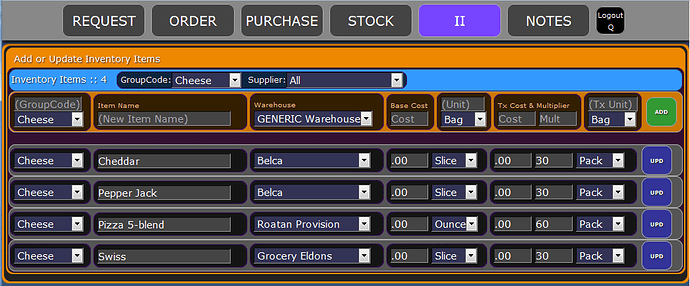Newest addition to the system: now you can Add & Update Inventory Items using this interface. Populated pick-lists for GroupCode, Base Unit, Transaction Unit so you can select from existing choices. Available in v1.3.
The II screen: (for Adding and Updating Inventory Items)
